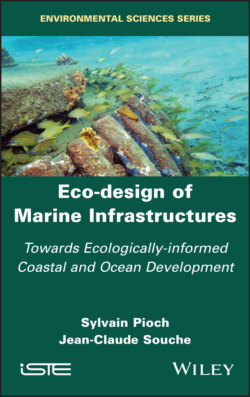Читать книгу Eco-design of Marine Infrastructures - Sylvain Pioch - Страница 22
1.4.2. Informing the administrative authority on the decision to be taken
ОглавлениеThe impact study is a prerequisite for an administrative decision to authorize or approve a facility, structure or development. It contributes to:
– informing the competent authority, that is, the administrative authority (minister, prefect, mayor, president of a general council) that authorizes the work, about the nature and content of the decision to be made (authorization, approval or refusal of the project);
– guiding the above in defining the conditions under which this authorization is given, for example, with regard to the implementation of measures to eliminate, reduce and offset for harmful effects;
– controlling a posteriori the respect of the commitments made by the project owner, for example, by ensuring a follow-up of the consequences of the project on the environment during the implementation and operation phases.
In France, the procedure required by the legislator is broken down into 11 sections described in Article R 122-5 of the French Environmental Code. For the study of the project’s impact on the environment, these 11 points can be grouped into six stages, as described in Figure 1.6.
Figure 1.6. General approach to conducting an environmental impact assessment (French Ministry of the Environment)
1) Preliminary scoping (step 1/6): this preliminary phase after the project proposal and screening, carried out by the project owner, with or without technical assistance (AMO), consists of identifying a limited number of potential environmental issues from the vast field of those to be dealt with in depth in the EIA. The project owner can officially request a scoping exercise from the investigating department to help identify the priority issues and other projects to be taken into account in the analysis of cumulative impacts, as well as the data sets or studies available on the project site. This framework makes it possible to determine whether the project should be subject to a declaration or an application for authorization under the Water Act, according to the headings of the nomenclature resulting from Article R. 214-1 of the Environmental Code which may apply to it.
2) Baseline data collection (step 2/6): the objective in this step is to provide ex ante the environmental status of a site. This baseline is based on data from the biological, physical, landscape and human environment of the site before the project is implemented. It must provide sufficient data to identify, evaluate and prioritize the possible effects of the project on the environment and to allow for the rehabilitation of the site at the end of the operation.
3) Screening (step 3/6): this step consists of assessing, through multi-criteria analysis, all the possible alternatives of the project design and sites to select a preferred alternative with the least environmental impact, excluding alternatives with an unacceptable impact. It also prepares for addressing the significant impact with steps 4, 5 and 6.
4) Impact prediction and assessment (step 4/6): at the intersection of the initial state and the technical characteristics of the project, the EIA includes “an evaluation of the direct and indirect, temporary and permanent effects of the project on the environment, and in particular on the fauna and flora, the sites and landscapes, the soil, water, air, the climate, the natural environment and biological balance, the protection of property and cultural heritage and, where appropriate, the convenience of the neighborhood (noise, vibrations, odors, light emissions) or on hygiene, health, safety and public health” (Article R. 122-3 of the French Environmental Code).
5) Mitigation (step 5/6): mitigation measures aim to avoid, reduce and finally offset some of the impacts envisaged despite the choice of the alternative with the least environmental impact (priority avoidance measures). This ARO sequence is essential and must be treated with particular care. Indeed, if rehabilitation measures can be envisaged at the end of the EIA, it is always better controlled and often easier to avoid or limit degradation rather than offset it. This phase of the EIA also involves identifying monitoring protocols (methods, indicators, plans and sampling strategies) that are most relevant and appropriate to the effects being monitored. This part is usually the core of the environmental impact statement used for the EIA review by the competent authority (regulators) and other consultees, including the public and NGOs.
6) Impact monitoring (step 6/6): finally there is the impact monitoring step. It consists of an EIA follow-up by determining the protocols for monitoring the effects of the project and the mitigation measures over a variable period of time depending on the project, but including minimal monitoring before the start of the work (analysis that can be carried out during the initial state), monitoring during the construction phase, monitoring during the exploitation phase and, in the case of temporary occupation of the public maritime domain (PMD), monitoring following the dismantling of the exploitation unit (offshore wind farm, underwater pipeline, etc.). If necessary, monitoring also focuses on the effectiveness of offset measures (specific monitoring).
It should be noted that the preparation of an EIA is an iterative process and these six hierarchical sequences do not constitute successive, compartmentalized stages. In order for the EIA to serve as an effective decision-making aid for the project developer and its stakeholders, it is necessary to return to the different sequences several times, in iterations. For example, successful design of mitigation measures could possibly result in the removal of all significant impacts; hence a new screening exercise would reveal that there might have been no need to carry out a formal EIA had the mitigation measures been included from the start.
Once again, the EIA must be initiated as early as possible and follow a continuous, progressive and iterative process based on a good knowledge of environmental issues.
IMPORTANT.– Always give priority to avoidance; as mentioned above, avoidance is the only solution that will ensure that the project does not damage the environment and that major issues are preserved.
